|
3DNews Vendor Reference English Resource - All you need to know about your products! |
|
||||||||
 |
|||||||||
|
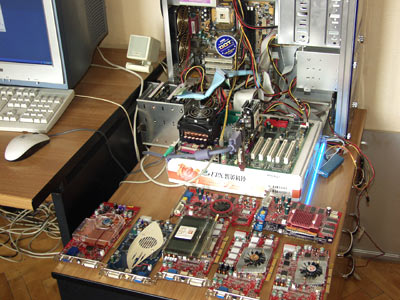
Benchmarking software used:
Along with the above reviewed video cards there was also the GeForce FX 5900Ultra 256MB made by ASUS - the fastest of all the FX family (the results marked in red). Also, remember that there are two results for the "ATI Radeon 9700PRO" presented - for the card 'as is" (light-green bars), with the second result for the card patched with SoftR9800 and overclocked to the 9800Pro level - 380/680 MHz (dark green). Tests and conclusionsOur testing session opens with the good old 3DMark2001. 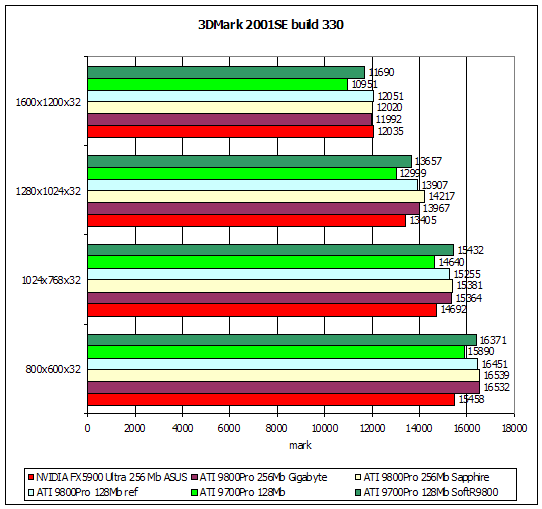
The picture proved quite interesting: at low resolutions, the GeForce FX5900Ultra took the last place; the card loses even to the "old" Radeon 9700 PRO. The latter revived due to overclocking and modified drivers, however paradoxically it may sound, takes a lead over the fully functional Radeon 9800 PRO! As the resolutions go up, the gap between the SoftR9800 and the full-featured brother grows wider, and at 1280x1024 the full-featured R9800PRO bypasses its younger brother. At that resolution, the GeForce FX5900 leaves the Radeon 9700PRO well behind, and at 1600x1200 the card wins an absolute leadership. The Radeon 9800 PRO 256MB performs practically on par with its 128 MB brother. 3DMark03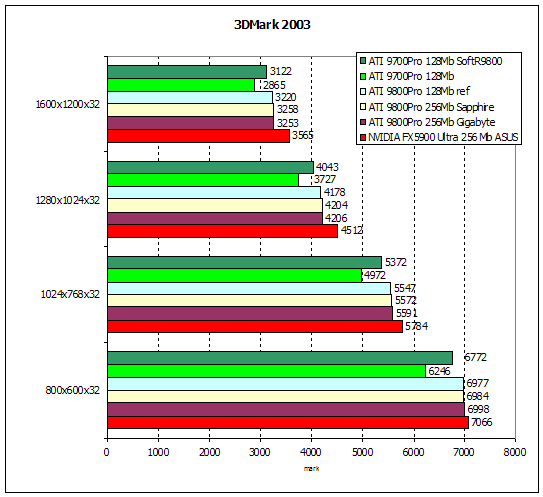
At this benchmark, the FX5900 somehow smoothly takes a sure lead followed by the Radeon 9800PRO, with the SoftR9800 and R9700PRO lagging behind. 
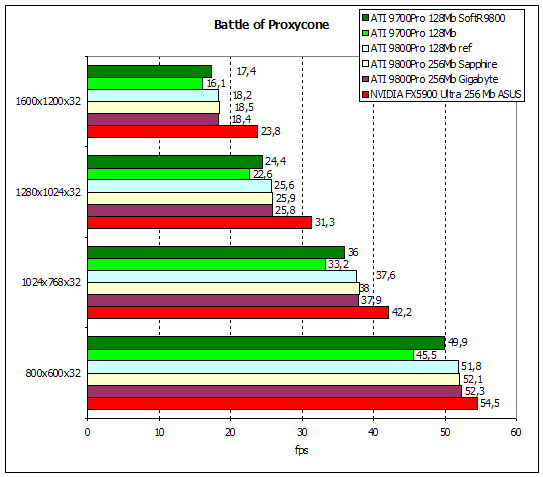
At this benchmark, the FX5900 leaves all the rivals behind, quite immensely, I must admit. Things are more or less predictable with the other video cards. 
At low resolutions, the FX5900 is practically on par with the SoftR9800, then the FX starts overtaking its rivals and takes a sure lead at high resolutions. The R9800 PRO brothers go abreast with one another at all the resolutions. 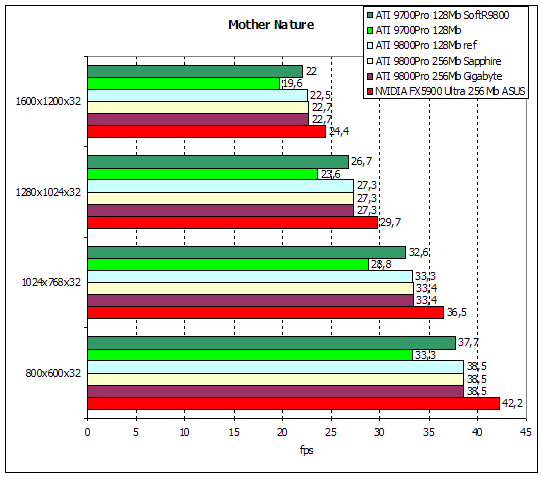
Of all the 3DMark'2003 family, this benchmark is the most resource-hungry, and at that the FX5900 demonstrates its undisputable leadership. The apportionment among the other cards stayed as before. 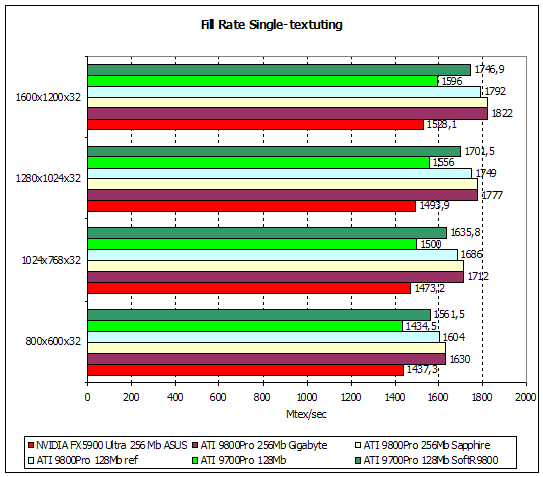
At single-texturing, the Radeon 9800PRO is beyond competition, with the FX lagging in the tail giving in to even the Radeon 9700 PRO. 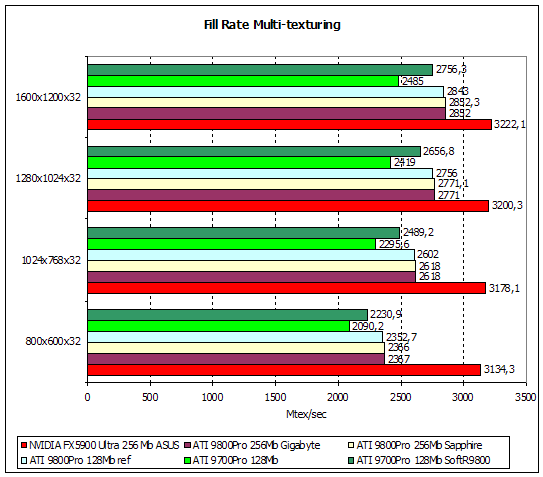
At this benchmark, all is reverse - the FX rules. 
At that benchmark, all the three Radeon 9800 PRO-based video cards go abreast and show absolutely identical results regardless of the memory capacity. The SoftR9800 lags behind them by a tenth of fps, then there goes the FX, with the "old man" R9700PRO coming the last. So many times the situation is familiar - at low resolutions, the FX lags behind, and as resolutions go up it is overtaking the rivals to win an absolute leadership at high resolutions. 
The FX takes a sure lead at 1600x1200, but it lags at low resolutions even behind the Radeon 9700 PRO, quite noticeably. Comanche 4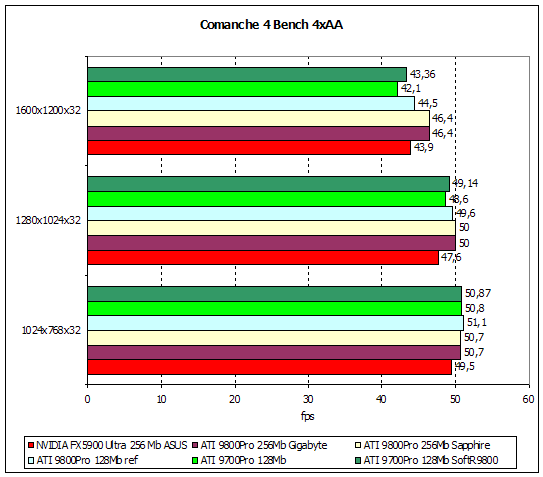
The FX takes the last position at all the resolutions except 1600x1200 where it was anyway able to overtake the R9700PRO. Codecreatures Benchmark Pro 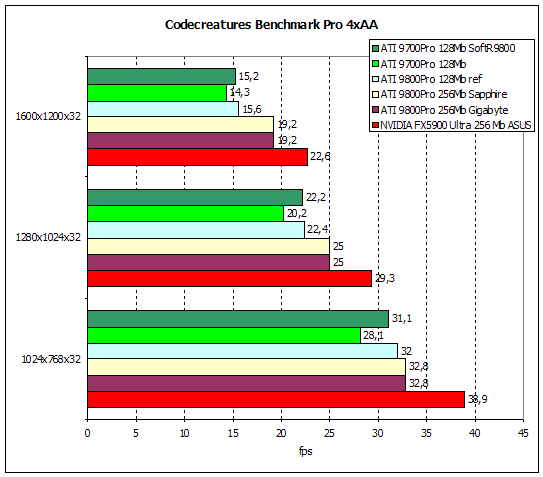
This is the only benchmark that shows a vivid difference among the results shown by the ATI Radeon 9800Pro 128 and 256Mb version, and the gap grows wider as the resolution goes up. The undisputable leadership at this super-hard benchmark is taken by the FX. RightMark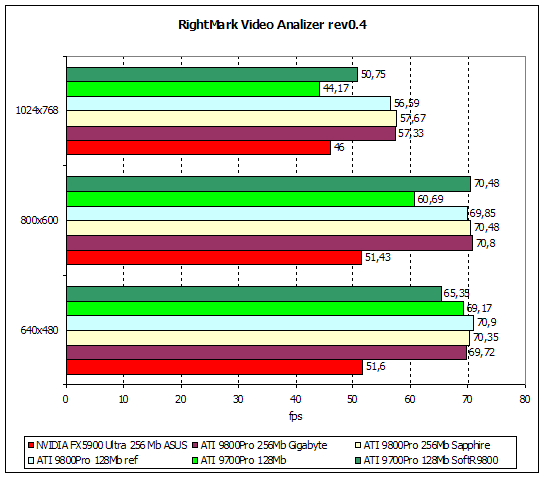
The picture is absolutely identical to that observed in the Comanche 4 benchmark: the FX5900Ultra was able to overtake the R9700PRO only at 1600x1200, and at all the other benchmarks this card proved to be an absolute outsider. UT2003

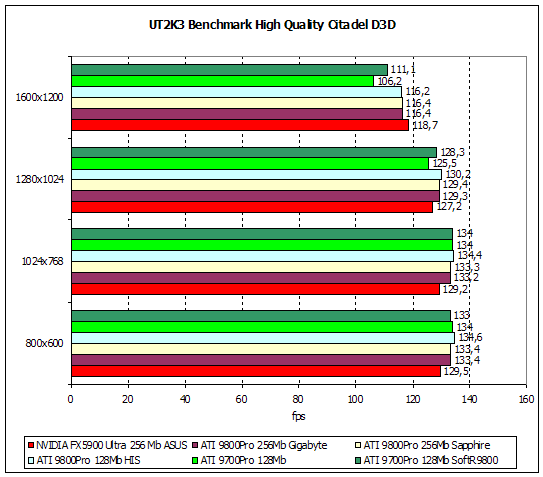
At all the three benchmarks, the FX lags behind the R9800PRO at low resolutions and takes a lead at high. The Radeon 9800 PRO brothers perform practically abreast, with the SoftR9800 lagging behind them a little bit. GunMetal Benchmark

The picture observed in this benchmark is practically identical to that in UT2003 - at low resolutions the FX falls behind and wins the leadership back at high resolutions. ConclusionThe conducted tests allow to make the following conclusions:
So, what is in the upshot? As a result, the Radeon 9800 PRO 128MB proves to be the most balanced of all the reviewed video cards - the board shows a stable operation at all the tests, is not second to the 256 MB Radeon 9800 PRO, and in many tests it overtakes the much more expensive GeForce FX 5900 Ultra. Read more on this topic: |
|||||||||||||||||||||||||||||||||
|
|
||||||||||||||||||||||||||||||||||
|
||||||||||||||||||||||||||||||||||




